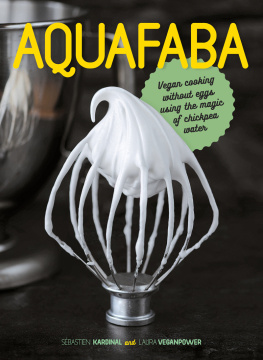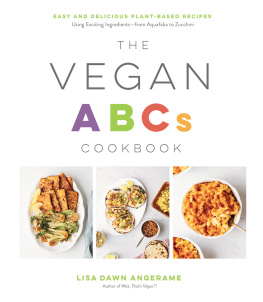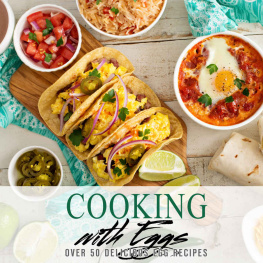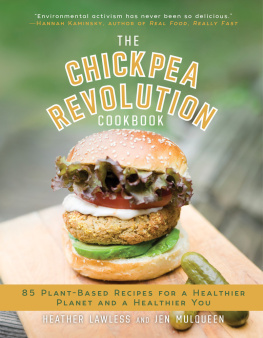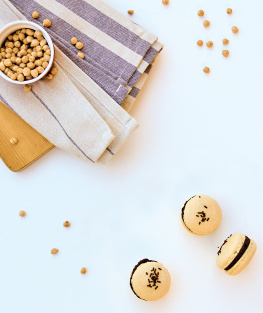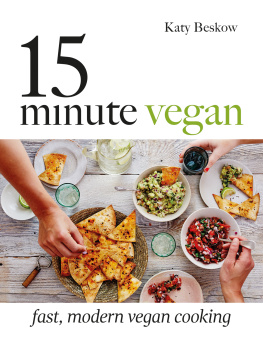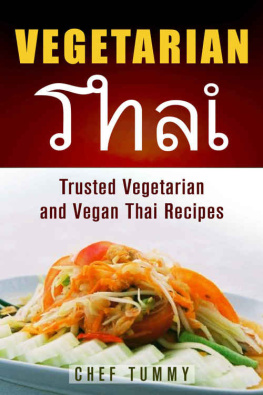Pagebreaks of the print version

AQUAFABA
ACKNOWLEDGEMENTS
This book is dedicated to all pioneers who push the boundaries to keep our world going forward. Thank you to Jol Roessel for being one of these people. All honour and glory to him! Many thanks to Laetitia and Tristan for their constant support and precious friendship. We would also like to thank Wismer ( www.wismer.fr ) for the use of their equipment.
This English language edition published in 2018 by
Grub Street
4 Rainham Close
London
SW11 6SS
Email:
Twitter: @grub_street
Facebook: Grub Street Publishing
Web: www.grubstreet.co.uk
Copyright this English language edition Grub Street 2018
Copyright 2017 ditions La Plage, Paris
Design: David Cosson dazibaocom.com
Cover design: Daniele Roa
A CIP record for this title is available from the British Library
ISBN 978-1-911621-15-7
eISBN 978-1-911667-57-5
Mobi ISBN 978-1-911667-57-5
All rights reserved. No part of this book may be reproduced or transmitted in any form or by any means, electronic or mechanical, including photocopying, recording or any information storage and retrieval system, without permission in writing from the publisher.
AQUAFABA
Vegan cooking without eggs using the magic of chickpea water
SBASTIEN KARDINAL and LAURA VEGANPOWER
Photography by LAURA VEGANPOWER
GRUB STREET LONDON
WHAT IS
AQUAFABA?
From the Latin aqua (water) and faba (bean), aquafaba is basically the leftover liquid from cooked legumes. Its incredible to think that this precious liquid that we usually tip down the drain actually has some amazing properties.
Of course, this leftover liquid is primarily composed of water, but it also contains protein, fibre, starch and sugar. During the cooking process around 5% of the natural nutrients in the legumes are transferred to the water. By evaporating the water we can get a higher concentration of these nutrients, thereby reaching an average ratio of 90% water to 10% protein and starch.
This is the exact same ratio that we find in chicken egg whites. The similarities in the composition of these two liquids explains, in part, why aquafaba reacts in the same way when whisked.
The abundance of tensioactive proteins means that when it is whisked, a superb mousse is obtained that holds its own against the peaks of traditional egg whites.
Technically, aquafaba can be obtained from the cooking juices of most legumes: broad beans, white beans, kidney beans, flageolet, adzuki beans, yellow soy beans, lupin beans, any type of lentil, split peas and, of course, chickpeas.
But, chickpeas are the most commonly used for various reasons. Firstly, raw chickpea aquafaba isnt poisonous, unlike other kinds, and can therefore be used in both its raw and cooked forms. Secondly, it is neutral both in taste and in colour: an essential quality that means it can be used in sweet or savoury recipes. Lastly, it is cheap, easy to make at home and keeps well. For all of these reasons, in this book we have chosen only to use chickpea aquafaba.
For all that, aquafaba isnt a miracle product that substitutes all the qualities of egg whites. We have carried out many tests and experiments to gain a better understanding of aquafabas behaviour and how we can use it. While it is true that it can work wonders, there have also been some disappointments. A simple experiment illustrates this well: heat a frying pan to 60 C with some oil or fat and pour 30 ml of aquafaba at room temperature into the pan.
What happens? It quickly boils and evaporates leaving a fine coated surface on the bottom of the pan. With egg whites, we would have got thick, coagulated whites, supple and pearly. We cant replace ovalbumin completely! When heated, aquafaba disappears quickly if it isnt used with another ingredient like sugar, guar gum, cream of tartar, agar-agar or even a starch... This structural fragility presented us with many challenges and a few real failures.
Take our attempt to make a vegan cheese souffl for example. Its one of the few savoury recipes that uses whisked egg whites. So it seemed both logical and exciting to give it a go. But nothing could be done!
Once in the oven, the soft white peaks of the aquafaba liquefied and dissolved the entire mix. Even with the help of starch or gum, it still didnt work. The same went for the blinis and duchess potatoes.
Basically, whisked aquafaba without sugar doesnt like to be cooked! Who knows, maybe in the future some genius in the kitchen will come up with a solution to the problem.
HOW WAS IT
DISCOVERED?
A true culinary revolution dawned in the small world of vegan cuisine: someone discovered a way to create the soft peaks of whisked egg whites... without eggs! From that moment on there was a before and after aquafaba. A border had come crashing down and we suddenly had access to a new, previously forbidden, promised land. The scope of new possibilities was truly staggering! We had come so close without ever realising it... We even thought it could be a hoax: it all just seemed too straightforward. However, the proof was there, right before our eyes, this fabulous ingredient that would change everything...
It all began in late 2014, in France, thanks to Jol Roessel who made the amazing discovery. However, he wasnt a chemist, or a professional chef, or even a specialist in molecular cuisine. Jol is a singer, a tenor, with curiosity and determination in equal measure.
This vegan blogger decided to start testing everything he could get his hands on to obtain a vegan mousse that was dense and stable enough to make one of his favourite dishes: les flottantes. But, what could he use instead of the whisked egg whites? This is a key challenge that many vegan food lovers have gone to great lengths to overcome using flaxseed decoctions, pure soya protein, CO2 cartridges and other imaginative ideas. Unfortunately, up until that moment, nobody had managed to find a vegan alternative to the soft peaks of whisked egg whites, that held firm in both its raw and cooked forms. By experimenting with different liquids to try and get a mousse, Jol Roessel found that the viscous liquid drained from a tin of chickpeas, reacted just like egg whites...
He shared this discovery on his blog Rvolution vgtale (Green revolution), but unfortunately the news took a few months to reach the general publics ears. In fact, it was a video recipe for chocolate mousse, posted by an association that put the spotlight on Jols technique. From that moment onwards, the news spread like wildfire on social networks. Culinary bloggers threw themselves into a series of tests, putting the theory into practice. At VG-Zone.net, we also got caught up in this wave of creativity making a series of meringues, chocolate mousse, les flottantes, meringue pie, etc. We became ever more amazed at the simplicity and effectiveness of the technique.
Next, the idea spread through the United States with Goose Wohlt, the man who is credited with the popularisation of the term aquafaba, continuing Jols work. Its a bit more practical and sexier a name than the leftover liquid from cooking legumes!

